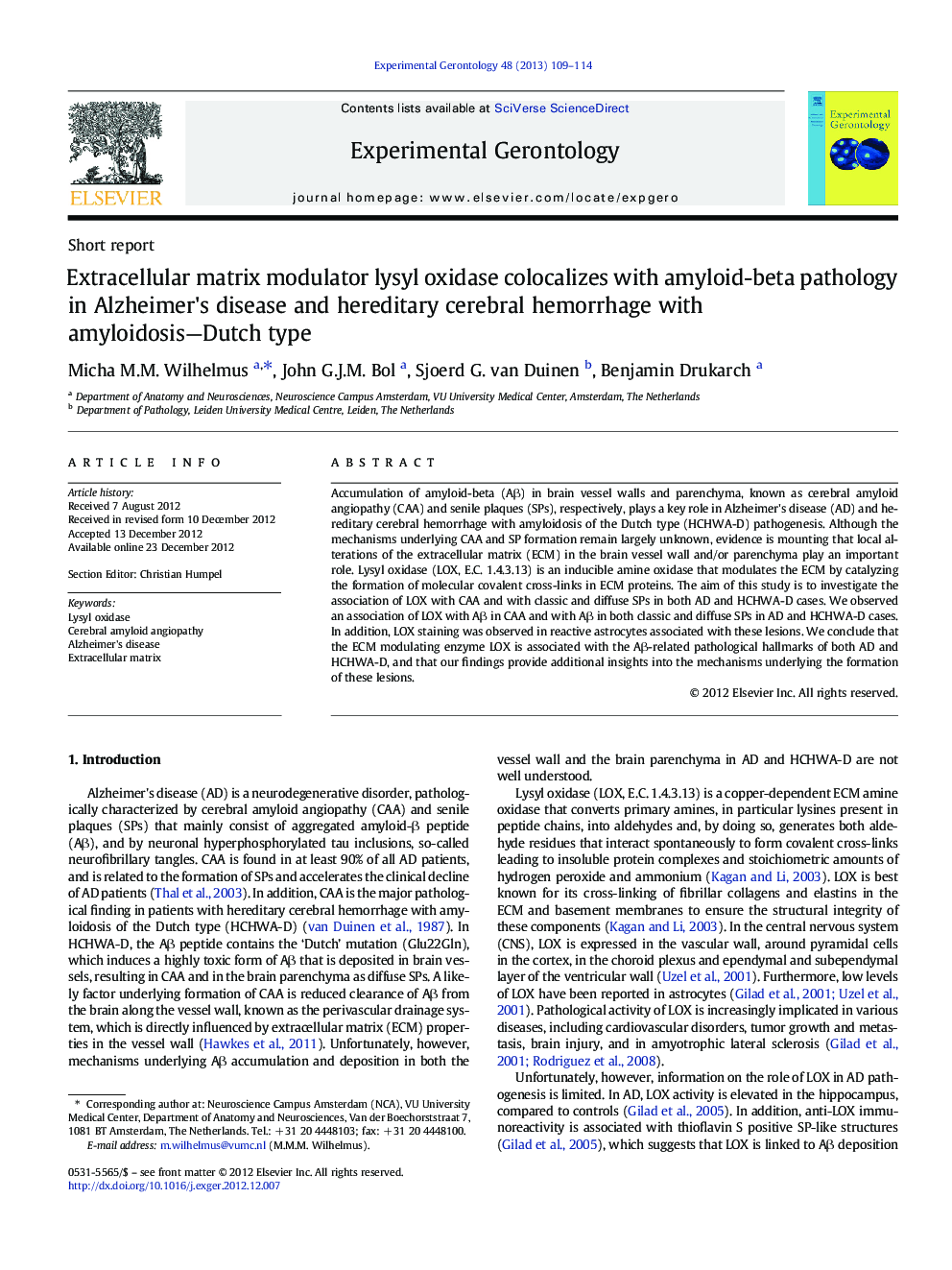| Article ID | Journal | Published Year | Pages | File Type |
|---|---|---|---|---|
| 1906394 | Experimental Gerontology | 2013 | 6 Pages |
Accumulation of amyloid-beta (Aβ) in brain vessel walls and parenchyma, known as cerebral amyloid angiopathy (CAA) and senile plaques (SPs), respectively, plays a key role in Alzheimer's disease (AD) and hereditary cerebral hemorrhage with amyloidosis of the Dutch type (HCHWA-D) pathogenesis. Although the mechanisms underlying CAA and SP formation remain largely unknown, evidence is mounting that local alterations of the extracellular matrix (ECM) in the brain vessel wall and/or parenchyma play an important role. Lysyl oxidase (LOX, E.C. 1.4.3.13) is an inducible amine oxidase that modulates the ECM by catalyzing the formation of molecular covalent cross-links in ECM proteins. The aim of this study is to investigate the association of LOX with CAA and with classic and diffuse SPs in both AD and HCHWA-D cases. We observed an association of LOX with Aβ in CAA and with Aβ in both classic and diffuse SPs in AD and HCHWA-D cases. In addition, LOX staining was observed in reactive astrocytes associated with these lesions. We conclude that the ECM modulating enzyme LOX is associated with the Aβ-related pathological hallmarks of both AD and HCHWA-D, and that our findings provide additional insights into the mechanisms underlying the formation of these lesions.
► LOX associates with the Aβ-related pathological hallmarks of AD and HCHWA-D cases. ► LOX is present in cerebral amyloid angiopathy and senile plaques. ► LOX is present in reactive astrocytes associated with Aβ-related brain deposits in AD and HCHWA-D cases. ► Our findings provide insights into the mechanisms underlying SP and CAA formation.
